Conventionally kept lawns have a huge negative impact on the environment. Here are 8 eco-friendly ways to cultivate a more sustainable lawn.
8 Steps to a More Sustainable Lawn
Forget corn—America’s most cultivated crop might just be Kentucky bluegrass. In fact, grassy lawns cover an area roughly three times larger than any irrigated crop, comprising a region more than 31 times the size of Delaware.1)University of Delaware: Turf Grass Madness
The parklike aesthetic of a well-kept lawn might be appealing, but it comes at a significant cost to the environment.
While it’s easy to critique the companies that spray toxic pesticides over farm fields, the truth is that standard lawn care can be equally dangerous for both your health and the planet.
You can make a difference for the environment and reclaim some of that space by finding more sustainable ways to take care of your lawn—or even get rid of it altogether.
The ‘Timeless’ Appeal of Lawns
There’s nothing natural about vast swathes of the same plant grown to uniform size, so why do so many people find lawns to be visually appealing? Some researchers suspect that an appreciation for open spaces is linked to humanity’s early history on the African Savannah. Grasslands conveyed a sense of safety in this environment because they provided open sightlines for spotting predators.2)Scientific American: The American Obsession with Lawns
You May Also Enjoy:
“4 Ways to Improve Your Garden—With Grass?”
However, today’s parklike expanses didn’t become common until the rise of the leisure class in 18th century Europe. Designated acres of land on one’s estate for no purpose other than looking pretty and paying servants to maintain it became a respected sign of wealth.
The end of WWII and the advent of the “American dream” of home ownership is what initially catapulted the lawn into suburbia. Lower housing costs (and easy access to toxic fertilizers and pesticides) made it possible for almost everyone to implement this status symbol for themselves, to the tune of a collective $30 billion a year.3)University of Delaware: Turf Grass Madness
Today, the backyard lawn is so expected that we barely give it a second thought. But, the cost of this near-universal cultivation practice is staggering for the environment.
4 Ecological Costs of Growing Grass
It turns out those millions of acres of “green space” aren’t as innocent as they appear. Increasingly, research is confirming that the prevailing lawn care regimen is causing some serious problems for the planet at large.4)Independent: Keep off the grass: Research Confirms That Highly Manicured Lawns Produce More Greenhouse Gases Than They Soak Up
Excessive Water Use
Over 7.9 billion gallons of water are used for landscaping across the United States each day, which comes to an estimated 200 gallons per person.5)Go Green: The Environmental Impacts of LawnsThis collective passion for blue-green blades of grass is leading to historically low groundwater levels across the country and putting more pressure on a dwindling supply. The water table is down hundreds of feet in some locations, and many rivers and streams now go dry for months out of the year.6)NASA Earth Observatory: Ecological impact of Lawns
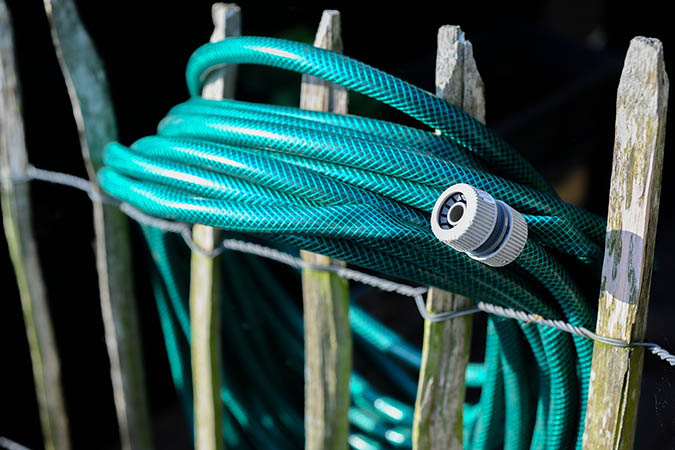
Image by Rudy and Peter Skitterians from Pixabay
Creating Biological Deserts
Don’t be fooled by appearances. A grassy lawn might look natural, but in regards to its usefulness for other species, it might as well be asphalt. Most common lawn grasses aren’t native to America, meaning that the vast majority of local insects struggle to survive in them.
You May Also Enjoy:
“How to Attract Beneficial Insects and Repel Pests Through Garden Design”
“An Insect Hotel Will Keep Your Pollinators Warm this Winter”
“Jump-Start Your Compost With These 5 Free, DIY Compost Activators”
This has ramifications throughout the food chain, as it restricts the potential diets of songbirds, amphibians, and reptiles. In other words, lawns lead to a slow decline in native plant and animal species—while making it easier for unwanted invasive species to thrive.
High Levels of Pollution
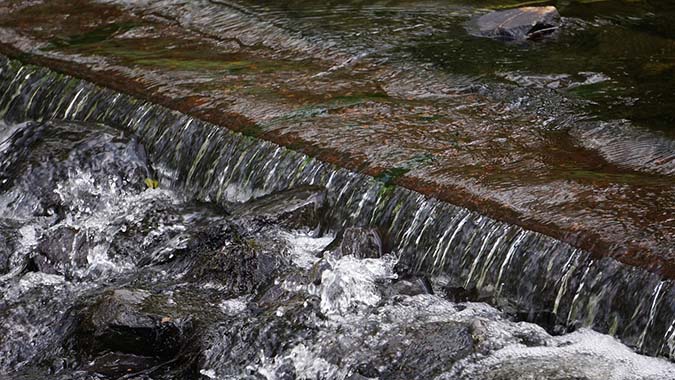
Image by Merja Partanen from Pixabay
Non-native grass species aren’t naturally suited to North American conditions, meaning that copious amounts of chemical fertilizers and pesticides are often needed to keep them healthy.
It just takes one heavy rain to cause these compounds to run into storm drains, where they eventually make it into rivers and lakes. These pesticides can damage the fragile skin of fish and amphibians, and excess nitrogen fertilizer can trigger algae blooms that degrade water conditions by blocking sunlight and depleting oxygen.7)EPA: Harmful Algae Blooms
This ecological damage isn’t always close to home. Every year, fertilizer runoff from suburban lawns lands in the Mississippi River and travels to the Gulf of Mexico, where it creates a hypoxic (dead) zone that kills off millions of fish and other species.
You May Also Enjoy:
“How to Rescue a Garden Destroyed by Grazon Contamination”
Farmers might get all the flack for their pesticide use, but the average homeowner regularly uses up to 10 times the amount of toxic chemicals on their lawn per acre. 8)https://www.nytimes.com/2014/05/11/opinion/sunday/the-toxic-brew-in-our-yards.html,9)https://www.fws.gov/news/ShowNews.cfm?ID=1914520959
Lawn care products are also likely to be overapplied, resulting in unsafe conditions for all species involved.
And we do mean “all.” Lawn chemicals have been found to correlate with cancer levels in pet dogs,10)Live Trading News: Lawn Chemicals Linked to 2 Types of Cancer in Dogs and a literature review of over a decade’s worth of cancer research confirmed a positive association with pesticide exposure.11)The College of Family Physicians in Canada: Cancer Health Effects of Pesticides
Greenhouse Gas Emissions
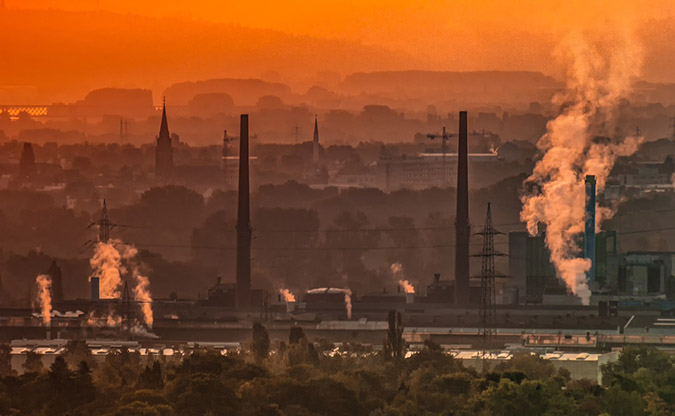
Image by analogicus from Pixabay
While a sustainably tended lawn can act as a carbon sink—absorbing carbon dioxide and keeping it out of the atmosphere—standard management processes are only increasing the amount of greenhouse gases in the air. It’s estimated that as much as 5 percent of U.S. air pollution is directly correlated with lawn care,12)People Powered Machines: Gas Mower Pollution Facts mostly due to mowing, fertilizing, and weed whacking the grasses on a regular basis.
You May Also Enjoy:
“15+ Ways to Reduce Your Carbon Footprint”
You might not think of your mower as another vehicle, but in many ways, it is. Over 500 million gallons of gas are used for power mowers each year, which is like having an extra 3.5 million cars on the road.13)Ecology Action Center: Environmental Impacts of the Modern Lawn Even worse, a lawn care study in Tennessee found that tending a hectare (equal to 10,000 square meters or 2.471 acres) of lawn produced as much as 2,500 kilograms of carbon dioxide per year, or the greenhouse gas equivalent of a flight halfway across the globe.14)Journal of Environmental Management: The Effects of Household Management Practices on the Global Warming Potential of Urban Lawns
Until recently, the EPA didn’t regulate emissions levels on riding mowers, and this lack of standards meant that using the average riding mower for an hour created the same amount of pollution as 34 cars.15)University of Delaware: Turf Grass Madness
In fact, lawns aren’t much better for the planet than industrial agricultural fields. Maintaining urban turf grass contributes as much as two-thirds of the carbon emissions as maintaining those farm fields, and you don’t even get the benefit of food in the process.16)Independent: Keep off the grass: Research Confirms That Highly Manicured Lawns Produce More Greenhouse Gases Than They Soak Up
8 Ways to Cultivate a More Sustainable Lawn
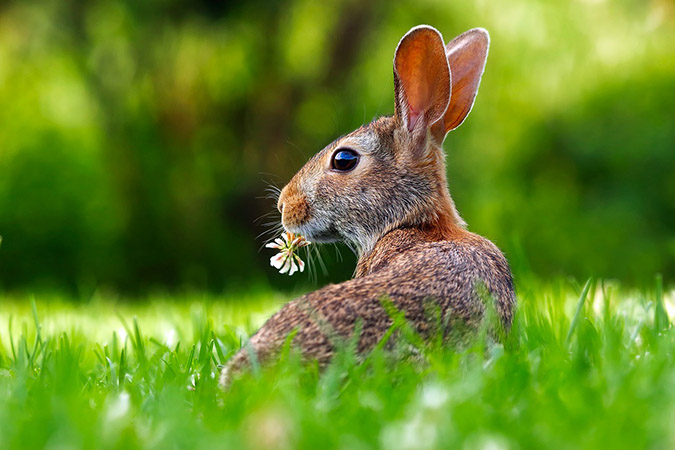
Image by David Mark from Pixabay
At first look, the environmental cost of your lawn care regimen is alarming.
The good news? You can opt out of a cultural narrative that prefers chemically cultivated lawns. A few simple changes to how you approach your backyard can make all the difference for the planet—and your health.
You May Also Enjoy:
“The #1 Way to Measure Soil Moisture”
“Aerobic Compost Tea, Worm Tea, and Leachate—A Clarification”
“Make Peace With Your Poop (and Then Make Compost With It!)”
Ready to improve the environmental sustainability of your lawn, or even stop having one in the first place?
Below are some tips for getting started. Don’t be fooled by how simple they are to implement—these changes will make a significant difference in the health of your lawn.
Sustainable Lawn Tip #1: Switch Out Ornamentals for Fruit Trees
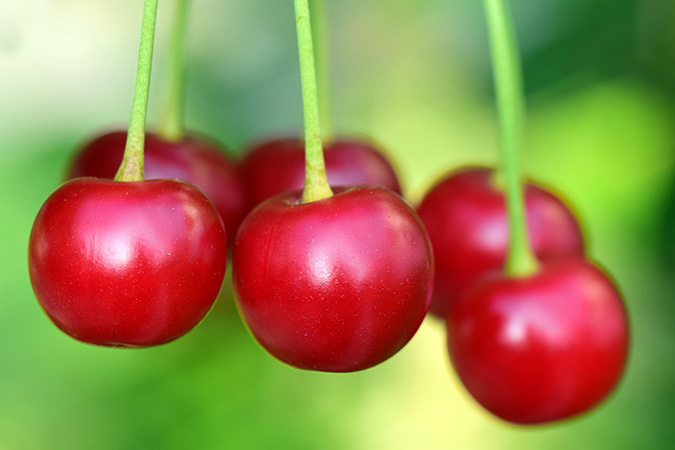
Image by Ulrike Leone from Pixabay
Why spend time tending to a bush that won’t benefit your dinner plate? Planting berry bushes and small fruit trees will add visual interest to your yard and, once they mature, they can feed you throughout the summer. Best of all, many fruit trees (like elderberries and pawpaws) are less needy than standard ornamentals, meaning you’ll save on water and fertilizer use, as well.17)The Grow Network: Are You Prepared for Peak Chicken?
You May Also Enjoy:
“How to Grow 21 Amazing Fruit Trees From Seed”
Sustainable Lawn Tip #2: Use Fertilizer Sparingly (Or Not at All)
There’s no reason to rely on synthetic fertilizers for a healthy, sustainable lawn. For a natural alternative, leave the grass clippings on the lawn after mowing it so that they can decompose in place and restore fertility to the soil. In fact, research shows that if lawn clippings were left to decay on every lawn in the United States, 37 billion pounds of carbon would be stored each year.18)Go green: The Environmental Impact of Lawns,19)NASA Earth Observatory: Looking for LawnsIf you can’t bear to forgo commercial fertilizer for the entire season, then use it sparingly and only on newly planted grass. Also, be sure to watch the weather report carefully to ensure you aren’t applying fertilizers when heavy rain is in the forecast.
Sustainable Lawn Tip #3: Get Comfortable With Taller Growth
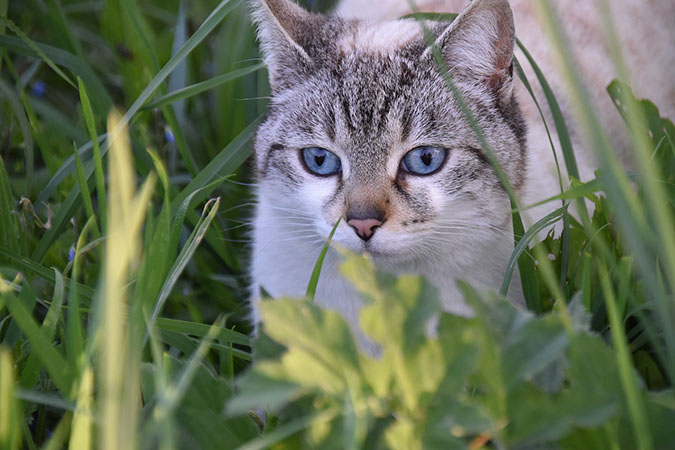
Image by JackieLou DL from Pixabay
Every hour spent running the lawn mower spits shocking amounts of greenhouse gases into the air, so mow less often—or not at all. Kids can still run and play in shin-high grasses, and letting native flowers have free reign in your yard is surprisingly beautiful. To allow these plants to go through their full life cycle, consider mowing only twice a year or mowing paths throughout your yard for easy transverse.
Sustainable Lawn Tip #4: Keep It Small
Filling your entire yard with uniform grasses is boring compared to the visual benefits of a variety of flower beds. You can get creative with sustainable landscape design by cultivating a backyard that works both for you and for neighboring wild species.20)University of Delaware: Sustainable Vegetation
You May Also Enjoy:
“Sheet Mulching: Build Soil, Thwart Weeds, and Make Your Garden Fertile”
“5 Inexpensive, Simple Solutions For Small-Space Composting”
Sustainable Lawn Tip #5: Rely on Ground Cover
Turfgrass isn’t the only option for covering bare ground. Low-maintenance groundcovers like ferns, mosses, sedge, and native grasses all require less water and fertilizer than conventional lawns, and these sustainable lawn plants are beautiful to look at besides.21)University of Delaware: Groundcover
Sustainable Lawn Tip #6: Limit the Use of Gas-Guzzling Equipment
It’s easier than you think to keep your motorized lawn mower permanently in the garage. Small yards can be easily maintained with a push mower, and careful planning will limit the amount of time that you need to use a gas-powered one. You can maximize efficiency by keeping the blades sharp and mowing only when the grass is completely dry.
Sustainable Lawn Tip #7: Stop Excessive Irrigation
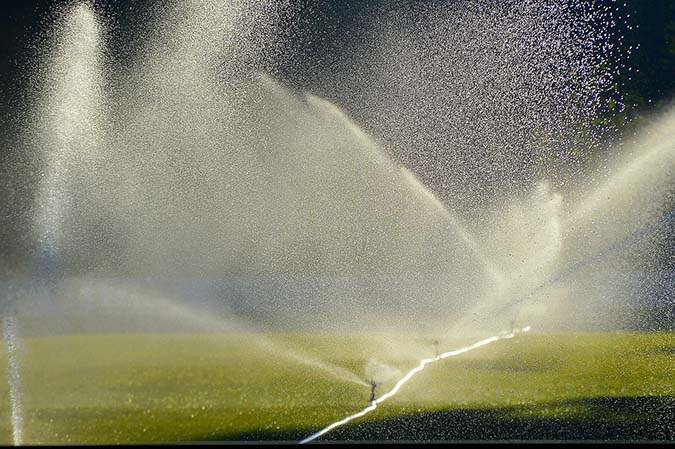
Image by Daniel Borker from Pixabay
If your lawn requires copious amounts of water to stay green in the summer, you clearly aren’t growing a species that’s well-suited to your climate. Switch out standard grass seed for native plants instead, and your water requirements will diminish significantly.
Sustainable Lawn Tip #8: Experiment With Organic Pest Control
There are plenty of non-toxic ways to control irritating weeds and insects without poisoning your entire yard. Many species can be controlled with a simple soap spray, and many organic options are less damaging to the environment. For more holistic care, consider managing your sustainable lawn through integrated pest management (IPM) instead.
Want a Bigger Lawn Care Benefit? Grow Food Instead!
If you want to stop your backyard from poisoning the planet AND make strides toward food security, consider pulling out your lawn and planting a vegetable garden instead.
The planet’s food supply has never been more precarious, and you might already have lived through “peak productivity” on earth for many of the foods humanity relies on. Over-irrigating and dousing millions of acres of turf with chemicals certainly isn’t helping matters.
You May Also Enjoy:
“Is Tap Water Safe for Plants?”
In contrast, using your yard to grow your own food helps you put valuable soil back into production, and backyard gardens tend to use a third less water than standard lawns. Best of all, it’s easier than you think to get started.
If you’re ready to start turning your lawn into a sustainable food supply, The Grow Network is the perfect place to begin. From tips on how to convert your yard to a high-yield food forest to advice on starting a Native American–inspired Three Sisters Garden, we are here to help you succeed.
So get started growing a more sustainable lawn today! The health of your yard (and your family) might depend on it.
What Do You Think?
What steps do you take to cultivate a sustainable lawn? What tips do you have for others seeking a more planet-friendly yard? Let us know in the comments below!
______________
The Grow Network is a participant in the Amazon Services LLC Associates Program, an affiliate program designed to provide a means for our team to earn fees for recommending our favorite products! We may earn a small commission, at no additional cost to you, should you purchase an item after clicking one of our links. Thanks for supporting TGN!

The Grow Network is a global network of people who produce their own food and medicine. We’re the coolest bunch of backyard researchers on Earth! We’re constantly sharing, discovering, and working together to test new paths for sustainable living—while reconnecting with the “old ways” that are slipping away in our modern world. We value soil, water, sunlight, simplicity, sustainability, usefulness, and freedom. We strive to produce, prepare, and preserve our own food and medicine, and we hope you do, too!
References
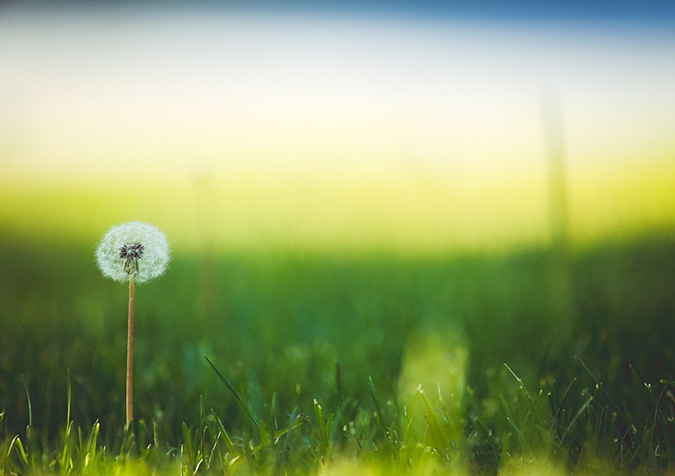

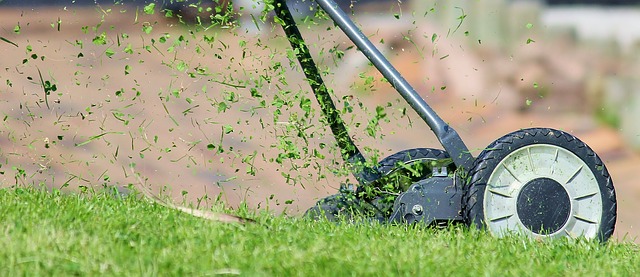








COMMENTS(3)
Fantastic article!! I want to see more people waking up to this Truth. It is more Ego than anything to think your lawn has to look like a golf course. Now if we could just get golf courses themselves to become more ecologically friendly??. . . .
Diana in Portland (where many need to WAKE UP!!)
I live in the cooler southern part of Australia and have been wanting for years to ditch my kikuyu lawn for a ground cover. I rarely water my lawn, as kikuyu is tough and I fear that any ground cover I switch to will require more water and not cope with mixed conditions of sun and shade. The reason I want a no-mow ground cover is so that I can still earth my body. My lawn area is small. Any suggestions? It would help if the substitute is available in Australia, as we have strict controls on importing plants.
There’s only a bit of lawn left here in northern lower Michigan, as I’ve replaced the rest with fruit trees, raspberries, flowers, herbs, tubs of vegetables, a cold frame, and a raised veg bed in my 60×90 small city lot, including 20×40 house. The “bit” of lawn is now about half creeping thyme, which smells great when mowed. The only fertilizer it gets is compost, to fill in the dips, and I never water it. The extra nice thing about the thyme is, apparently, its roots don’t harbor the grubs that neighboring skunks drill in to the grass part for.